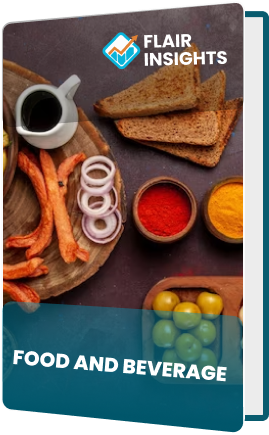
Global Edible Pigment Market Size By Type (Natural Edible Pigment, Plant Based), By Application (Food & Beverages, Pharmaceuticals), By Region, And Segment Forecasts, 2023 to 2032
Report Id: 10761 | Published Date: Feb 2023 | No. of Pages: | Base Year for Estimate: Feb 2023 | Format:
The Global Edible Pigment Market was valued at USD 2.1 billion in 2023 and is expected to reach USD 4.3 billion by 2031, growing at a CAGR of 8.2% during the forecast period from 2023 to 2031. The market's growth is driven by increasing consumer demand for naturally derived food colors, rising awareness about food safety, and a shift towards clean-label products. Edible pigments, derived from both natural and synthetic sources, are extensively used in the food and beverage, pharmaceutical, and cosmetics industries to enhance the visual appeal and acceptability of products.
Drivers
Rising Demand for Natural Food Colors:
Growing consumer preference for natural ingredients and the rising trend of
clean-label products are major factors driving the adoption of edible pigments
in food applications.
Stringent Regulatory Approvals for Food
Additives: Regulatory bodies worldwide are promoting the use of safe and
non-toxic food coloring agents, which is propelling the demand for high-quality
edible pigments.
Expanding Applications in Pharmaceuticals
and Cosmetics: The use of edible pigments in tablet coatings, syrups, and
cosmetics provides lucrative growth opportunities.
Restraints
High Cost of Natural Pigments: The
production and processing of natural pigments can be expensive, limiting their
adoption, especially in cost-sensitive markets.
Limited Stability of Natural Colors:
Natural pigments often face challenges like degradation under heat, light, or
pH changes, impacting their use in some applications.
Opportunity
Innovation in Microencapsulation
Techniques: Advances in encapsulation technology are enhancing the stability
and functionality of natural edible pigments, presenting growth opportunities
for manufacturers.
Emerging Markets in Asia-Pacific and Latin
America: Rising disposable incomes and growing awareness of food safety in
these regions are driving demand for edible pigments.
Market by Source Insights
Natural Pigments dominated the market in
2023 due to rising consumer demand for clean-label products. Pigments such as
anthocyanins, carotenoids, and betalains are widely used in food and beverage
applications.
Synthetic Pigments hold a significant
share, driven by their affordability and stability, although their growth is
constrained by regulatory scrutiny.
Market by End-Use Insights
The Food & Beverage sector accounted
for the largest market share in 2023, with applications in confectionery,
beverages, and bakery products leading the demand.
The Pharmaceutical segment is expected to
grow rapidly due to the increasing use of edible pigments in drug coatings for
visual identification.
Market by Regional Insights
North America led the market in 2023,
driven by strong regulatory support for natural additives and a growing
health-conscious consumer base.
The Asia-Pacific region is projected to
witness the fastest growth during the forecast period, fueled by rapid
urbanization, increased disposable income, and expanding food and beverage
industries in countries like China and India.
Competitive Scenario
Key players in the Global Edible Pigment
Market include Givaudan, DSM, Chr. Hansen, Kalsec Inc., Naturex (Givaudan
Group), Sensient Technologies, and Roha Dyechem Pvt. Ltd.. These companies are
focusing on expanding their product portfolios, developing sustainable
pigments, and forming strategic collaborations to enhance market presence.
Scope
of Work – Global Edible Pigment Market
|
Report
Metric |
Details |
|
Market Size in 2023 |
USD 2.1 billion |
|
Market Size in 2031 |
USD 4.3 billion |
|
Growth Rate (CAGR) |
8.2% (2023-2031) |
|
Market Segments |
Source (Natural, Synthetic), End-Use
(Food & Beverage, Pharmaceutical, Cosmetics), Region (North America,
Europe, Asia-Pacific, Latin America, MEA) |
|
Growth Drivers |
Rising demand for natural food colors,
regulatory support, and expanding applications in pharmaceuticals and
cosmetics. |
|
Opportunities |
Innovation in encapsulation techniques,
growth in emerging markets. |
Key
Market Developments
2023: DSM launched a new range of
carotenoid-based natural food pigments for beverages, enhancing visual appeal
and shelf stability.
2024: Sensient Technologies introduced a
patented microencapsulation technology for natural pigments, improving heat
stability in bakery products.
2025: Givaudan announced the expansion of
its natural pigment production facility in Europe to meet rising demand in the
food and beverage industry.
FAQs
What is the current market size of the
Global Edible Pigment Market?
The market was valued at USD 2.1 billion in
2023.
What is the major growth driver of the
Global Edible Pigment Market?
The rising demand for natural food colors
and clean-label products is the primary growth driver.
Which is the largest region during the
forecast period in the Global Edible Pigment Market?
North America currently leads, but
Asia-Pacific is expected to grow the fastest.
Which segment accounted for the largest
market share in the Global Edible Pigment Market?
The Food & Beverage segment dominated
in 2023.
Who are the key market players in the
Global Edible Pigment Market?
Major players include DSM, Givaudan, Chr.
Hansen, and Sensient Technologies.

Speak with an analyst to get exclusive insights tailored to your needs
.png)
